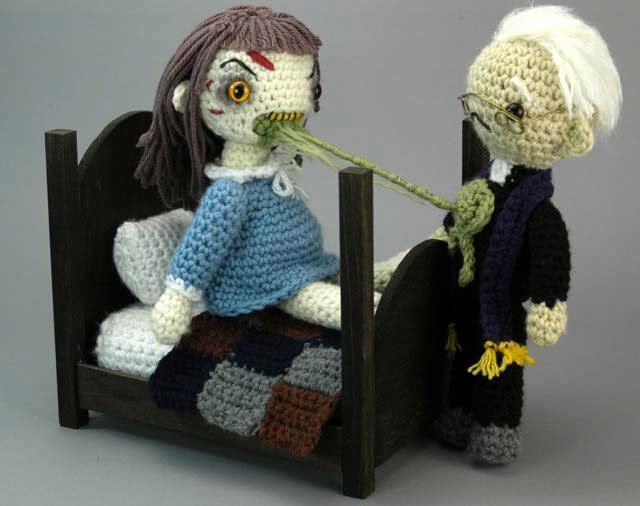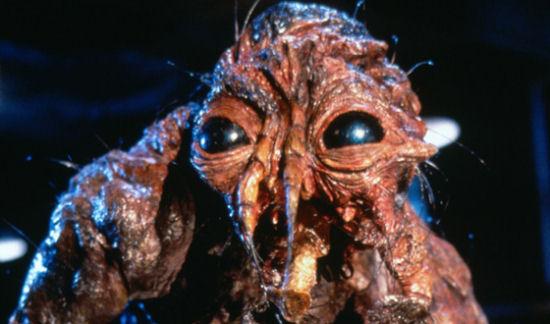Zack and Chrissie Make A Snorno
I never have had a great affinity for Superman as a comic-book hero, being more interested in human and damaged heroes such as Bruce Wayne's Batman or Tony Stark's Iron Man. Their stories contained flawed men trying to better themselves, as well as their world.
However, Superman being an alien from Krypton, I never really related to the character. He was always “Mister Goody Super Two-Shoes”, never breaking his high moral code to bring the bad guys down. I didn't mind Batman using fear and intimidation to find out The Joker's location, it was for The Greater Good. Try and get Superman to use his heat vision to go all Jack Bauer on a bad guy's kneecaps. Not going to happen.
 |
| Broody, no? |
So skip to 2013, and we
have the newest Superman film, Man of Steel. The franchise has been rebooted under
the helm of Zack Snyder, with Christopher Nolan producing. I'm a fan
of Snyder's early directorial work, such as the rebooted Dawn of the
Dead, 300 and Watchmen, but he's been slipping in recent years.
Christopher Nolan on the other hand has just gone from strength to
strength in his career. Starting with innovative films such as
Memento, then creating the incredible dream-thieving of Inception and
perfectly capturing a gritty and realistic Gotham in the Dark Knight
trilogy, he can just do no wrong in my eyes.
 |
| Christopher Nolan and Zack Snyder (Producer and Director...) (...I wish their roles were reversed) |
Focussing on the
realistic portrayal that Nolan gave Batman Begins, that is what the trailer
for this film seemed to suggest Man of Steel would focus on. The man
that is Clark Kent/Kal-El and not the Superman he chooses to be. The
trailer showed a young child running through washing lines with a
cape on his back, pretending to be the ideal than mankind could
strive towards. That was the film I wanted. More Man than of Steel. I wanted Clark to have
the life we have seen before (reporter for the Daily Planet, budding
relationship with Lois) but to have the realistic inner struggle of
whether to reveal himself as Superman. And to be fair to Man of
Steel, we do get that for about half the film. It's just simply not enough.
 |
| General Zod (Michael Shannon) |
Clark struggles between
keeping a low profile and not using his powers, therefore obeying his
Earth father, played with a terrific subtlety by Kevin Costner, and
utilising them to benefit those around him. This is so not to alert
people that Clark is actually an alien, and proof that we are not
alone in the Universe. It is an interesting way of taking the
Superman idea, as no one has thought about how a realistic Earth
would react to a man like Kal-El. Previous films simply show
everyone instantly loving and supporting him, but the film's correct;
people would freak the hell out knowing that there's a planet called
Krypton that has not only intelligent life, but life that is way more
advanced than us. That is why I enjoyed the style of intimidation
that the villain, Krypton's General Zod, uses to announce his arrival
to Earth, a broadcast around the world telling us that “We Are Not
Alone” and that one of his people has been living amongst us.
However, when Clark
goes on the road to try and find his true identity, that idea of a
secret identity seems to begin to fade away. He starts using powers
like super-strength and heat vision without hesitation, seemingly
throwing away all the inner conflict he endured and the advice
Costner gave him. This culminates in Clark blindly listening to his
second father figure/Robin Hood of the film, Russell Crowe, and
becoming the eponymous 'Man of Steel'. Just like that. In the blink of an eye.
Then the film quickly
degrades to becoming a 45 minute 'epic dual' between the two warring
alien factions, which slowly becomes tedious and boring, despite the
amount of collateral damage they mindlessly cause. For a guy
fighting on behalf of Metropolis and it's people, Superman surely
causes several hundred deaths in the final fight scene with General
Zod. I imagine because Snyder and Nolan got a bit greedy with the
effects and wanted another skyscraper to spectacularly tumble to the
ground, rather than think “Would Superman be so brash as to
collapse 20-odd buildings without hesitation?”.
Most importantly, I felt no
real desire to see Superman come out on top during the final fight
due to my lack of connection with the guy. Either that or the simple
fact that I just knew that he'd be fine and finish the job, unscathed
as usual, since he is freaking invunerable! Kal-El literally gets
pummelled into sides of buildings, gets blown up in explosions and
flies through giant alien spaceships, but not a single hair is
touched when he comes out the other side. There's no potential peril
at all and therefore no tension in my mind or my heart. At least
Bruce Wayne had broken bones that need healing and Tony Stark
required a Hulk roar to revitalise him in The Avengers. Supes needs
none of that and therefore I really wasn't worried about him during
any part of the film.
It's not all bad, as I
mentioned earlier. The first half of the film starts the character
off well and tries to take it in a new and fresh direction, but
ultimately falls down in the conclusion. Cavill does a good job as
the conflicted Man of Steel, but the plaudits lie with Michael
Shannon as General Zod, the film's antagonist. As usual Shannon
played the role with a lethal intensity which fit the Kryptonian
purist, who simply wanted to carry on the future of his planet,
albeit on Earth. Along with Costner, Shannon made the film bearable, but
again, his talents were wasted in the second half of the film
where he is hung from wires against a green screen and re-enacts the
final fight from The Matrix Revolutions.
I feel like I was
promised something much better than this reboot of a franchise,
mainly from the trailer but the appointment of Nolan as producer led
me to believe that another “comic book art film” such as Batman
Begins would be projected onto the silver screen, but alas I was
mistaken. Since release, it has earned millions worldwide and
received positive opinions from most of those who see it, so I
implore you to watch and see for yourself, it's probably just me.
But don't blame me when you're questioning Lois Lane's entire role in
this storyline, as well as the origin of Superman's suit. In a film
like this, you're not supposed to question the small details, but be
brought along for the ride, forgiving such indiscretions. But as I
was left with a laundry list of complaints after the credits rolled,
I don't think it had the desired effect. I simply had a lack of
zeal.
Rating - 4/10








